Be Aware & Take Care – Treat Simple Emergencies with Simple Aid
A woman is seen as a daughter, sister, wife & mother. In these multiple roles we play everyday, we have mastered the art of multitasking and balancing work & life.
But are we confident to treat an emergency at home or the workplace?
Most of us know we need to provide first aid in case of an emergency but do we know the right way of delivering care to a patient?
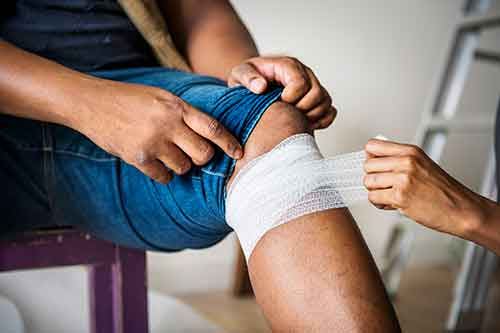
Here’s how I’m going to teach you to be aware & take care of your family, friends or colleagues with utmost confidence & ease.
Trips, Slips & Falls
- Domestic falls are the commonest accidents that happen in a household. It could be due to any hazard on the floor, trailing wires, items kept randomly on the floor, or faulty flooring.So, when a trip, slip or fall happens:
- Reassure the patient
- Identify the injured site
- Check for any cut injury, bleeding wound or bruising
- Check for any bony injury
For Suspected Head Injury:
- Look for any hematoma (blood clot over the scalp) – if present, apply ice packs.
- Look for any cut injury over the scalp – if bleeding profusely, wash with water and compress the wound with a clean cloth or cotton roll or sterile gauze for at-least 10-15 minutes.
- If the patient – post head injury, develops any warning signs as mentioned below, they need neuro evaluation and a CT scan immediately:
- Loss of consciousness
- Ear or nose bleeding or water discharge
- Black eyes
- Vision problems
- Vomiting
- Amnesia i.e., the patient can’t remember the event, or what happened before or after the event
- Altered mentation or drowsiness
- Fits or seizures
- If 60+ or on blood thinners irrespective of the mechanism of injury
- If the patient is drowsy – do not attempt to give them anything to drink or eat
For a Suspected Bony Injury:
- Following a fall, if the patient develops any of the following, one must suspect a fracture underlying:
- Inability to bear weight or move the affected part or limb
- Excruciating pain when weight bearing
- Increased swelling of the injured part
- Deformity of the injured part
In such a case:
- One must immobilize the limb over a splint available at home
- One must not attempt to move that injured part too much
- Ice packs can be applied
- Paracetamol can be given for pain relief
Here are some splinting techniques that can be done at home:
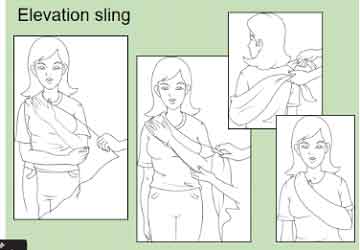
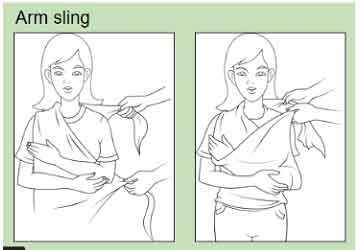
Burns:
- Burns are the second most common of the accidents that happen at home. This could be due to hot pans, cookers, hot vessels or hot items that come in contact with little children – like a bowl of hot soup, hot tea, hot water bucket, oil splashes or hot instruments like iron box left switched on, or electric kettles or ovens.Again, a burn can be dealt with much ease by initiating right treatment from the time of onset of the burn injury:
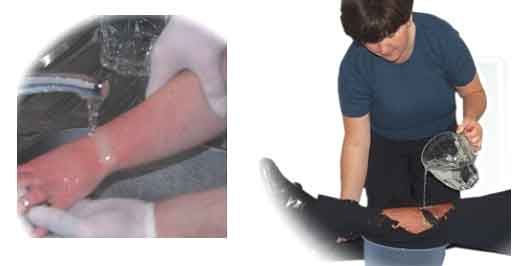
- One must ensure to pour cold water over the burnt site for at-least 10-15 minutes.
- If a child is uncooperative for that – simply immerse the affected site in a bucket or bowl of water with ice cubes in it for about 10-15 minutes. This is the most important step in preventing a burn from becoming deep.
- Do Not Apply: Dosa batter, tooth paste or turmeric powder.
- One Can Apply: Silverex ointment or Hydroheal ointment over the burn site after thoroughly washing with cold water.
- For Pain: One can take paracetamol or ibuprofen tablet.
- For Blisters – Please do not burst it or peel it – it will definitely leave a bad scar.
- For Stuck Clothing over the Burn Site – Do not attempt to remove it as it will cause the underlying skin to peel off thereby converting the burn into a more severe degree of burn.
- For Somebody Who Has Sustained Extensive Burns – Get medical assessment and help immediately without much delay.
Cuts & Bruises:
For Cuts:
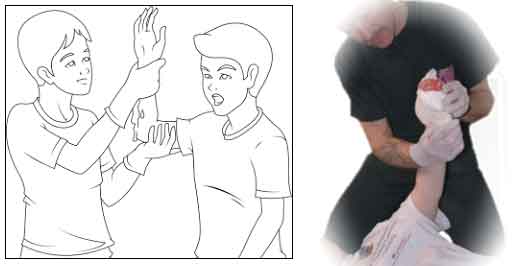
- Any type of superficial or deep cut – wash under running tap water to remove any contaminants and then compress the cut site with a clean cloth or sterile gauze or cotton roll & elevate the cut part above the level of the heart or against gravity to prevent further bleeding.
- For profusely bleeding wounds – tight compression is recommended; one could even use a crepe bandage over the cut site to achieve adequate continuous compression of the wound.
- Avoid putting the fingers in running mixers or grinders – commonest cause for cuts with fractures in women at home.
For Bruises:
These are usually caused by blunt trauma or injury where there is a blood clot or bruise formed superficially under the skin causing pain and swelling.
For Treatment of Bruises:
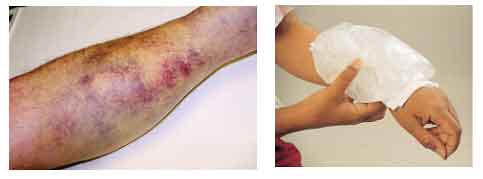
- Rest the part, apply ice, elevate and if symptoms don’t settle, then evaluate.
Caring for the Elders at Home:
Nose Bleeds:
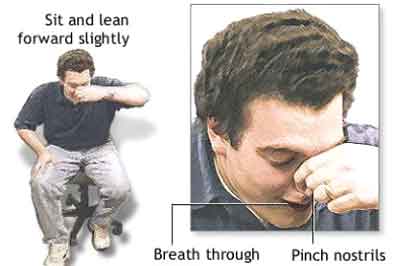
- If somebody has a nose bleed:
- Pinch the tip of the nose with constant pressure with thumb & index finger
- Sit forward (do not lie down flat)
- Breathe through the mouth
- Hold a cloth below
- Apply pressure for 15-20 minutes
- Usually the bleeding will stop, but if the bleeding continues, continue the same for another 15-20 minutes.
- Despite 2 attempts, if it is still bleeding, then rush to the emergency department for more definitive assessment and treatment.
Fainting Episodes:
The commonest reason for somebody to faint is low sugars or low bp.
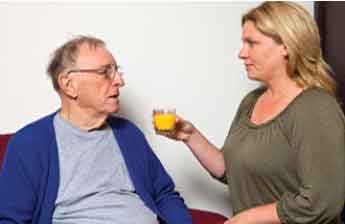
- Low sugars present with:
- Palpitations
- Sweating
- Giddiness
- Altered sensorium
- Slurring of speech
- Fits or seizures – when severe
- If awake & talking well – give one glass of sugar water or sugar in coffee or tea.
- If drowsy or altered in sensorium or decreased in responsiveness – do not give anything to drink orally, instead place a piece of chocolate in the mouth and call for help immediately.
- Low BP causing fainting episodes are usually transient and recover with rest and limb elevation.
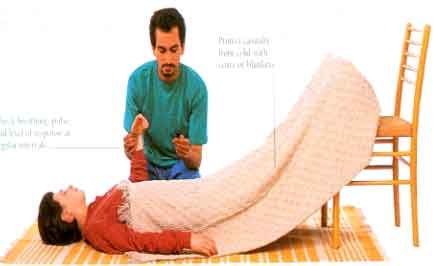
- Simple manoeuvres as explained below help increase the blood flow to the heart from the legs thereby instantly increasing blood output from the heart and hence increasing the BP on the whole and person gets symptomatically better.
- Low BP can be because of dehydration, infection, existing medications or decreased oral intake.
Allergic Reactions:
- Could be because of an insect bite, new medication, new food – commonly sea food, peanuts or nuts or it can even be a new cosmetic.Presents with:
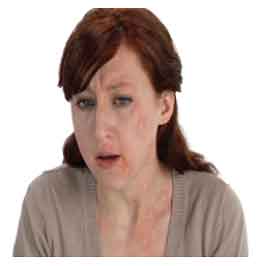
- Excessive itching
- Diffuse red rash all over the body
- Sometimes even with a fever
Immediate treatment at home when you are sure it is an allergic reaction includes:
- Tablet Avil 25 mg on tab to be taken stat (for adult).
- Calamine or Calosoft lotion for local application over the rash.
Remember the warning signs:
- Difficulty breathing
- Change in voice
- Swelling of lips or tongue or eyes
- Giddiness
- Loss of consciousness
These warning signs need immediate medical attention & intervention, else it can be life-threatening.

Dr. Aslesha Sheth
Consultant & Clinical Lead, Dept of Emergency Medicine
Kauvery Hospital, Chennai
